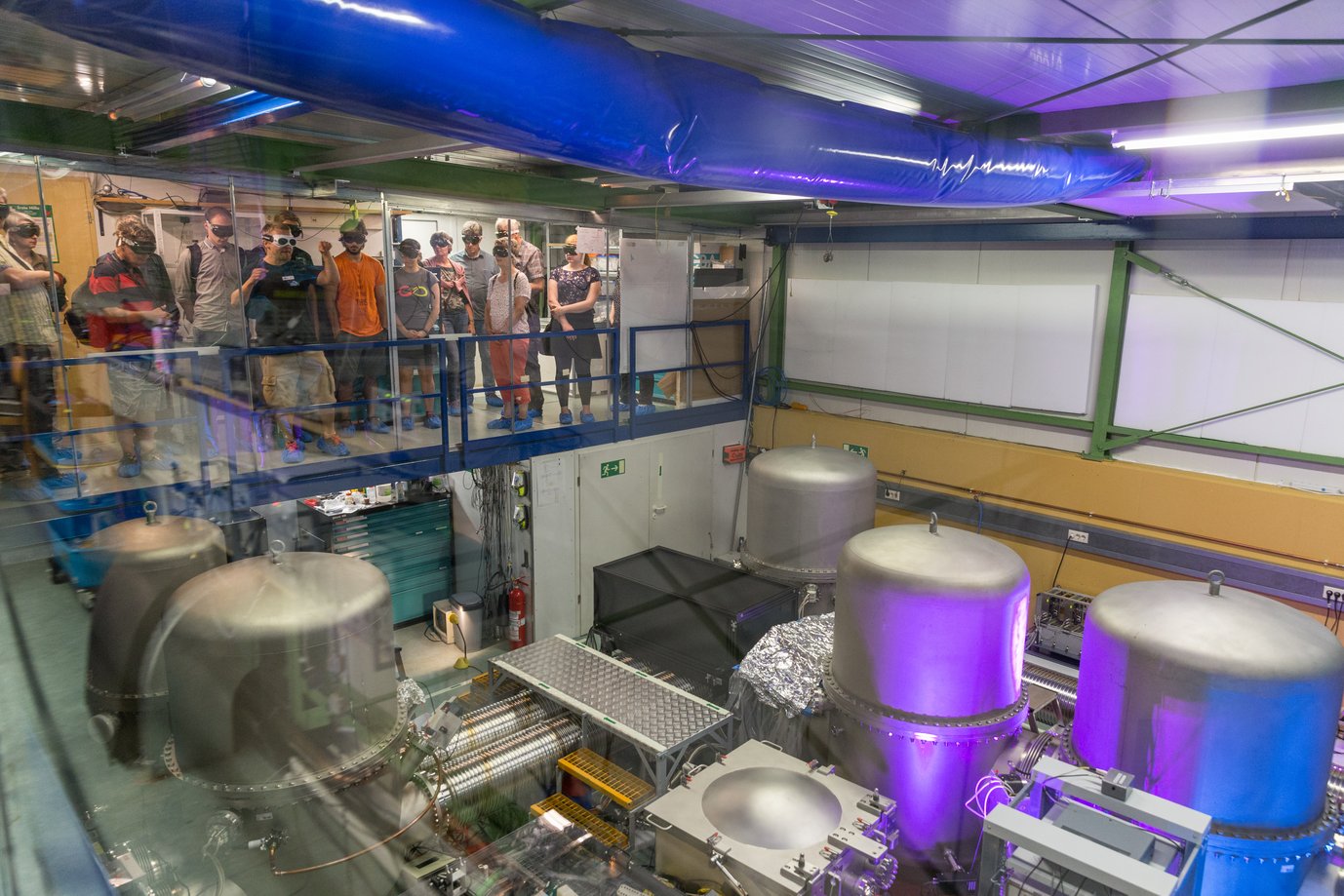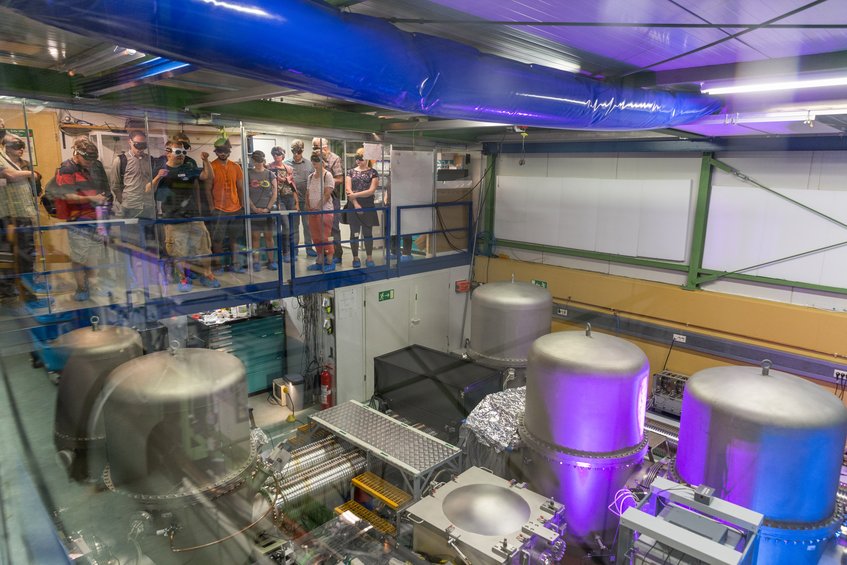Open Day at GEO600 on 2 July 2022
See the gravitational-wave detector near Sarstedt between 11:00 and 15:00
On Saturday, 2nd of July 2022, the Max Planck Institute for Gravitational Physics and the Institute for Gravitational Physics of Leibniz Universität Hannover are inviting everyone to visit the German-UK gravitational-wave detector GEO600 near Sarstedt. Between 11:00 and 15:00, researchers at the detector site inform the public about the new era of gravitational-wave astronomy and the crucial contributions of GEO600, a think tank of international research.
What? Open Day at the gravitational-wave detector GEO600 with tours, exhibits, and short presentations. All interested are invited!
When? Saturday, 2nd of July 2022 between 11:00 and 15:00
Where? Ruthe near Sarstedt, please come by public transport, bike, or car as described on the right.
No prior registration required.

With GEO600 into a new age of astronomy
The first direct measurement of gravitational waves in September 2015 opened a new door to the invisible, “dark” side of the universe. Since then, a total of 90 gravitational-wave signals from merging black holes and neutrons have been observed – a new age of astronomy has begun.
GEO600 plays an important role in this effort, as it develops and tests new technologies for detecting gravitational waves. These are crucial to improve the sensitivity of the Virgo detector in Italy and the LIGO detectors in the US. The latter made the first direct detection, which was awarded the Nobel Prize in Physics in 2017
Cutting-edge research at first hand
The Open Day on 2nd of July 2022, which will take place between 11:00 and 15:00, will give visitors first-hand information on the basic research and day-to-day work at the gravitational-wave detector GEO600.
Guided tours of the detector site also into the heart of the highly sensitive instrument are conducted as needed. Exhibits, short lectures and talks with scientists complete the offer.
Please note that according to the regulations of Leibniz Universität Hannover, the 3G rule applies to all GEO600 tours and FFP2 masks are mandatory on the GEO600 site. Please bring proof of 3G status for inspection. Certificates of exemption from the mask mandate will not be accepted.
Getting there by bike or public transport
The GEO600 site is situated to the south of the Leine River and can be reached by taking a slight detour from the “Grüner Ring” cycling route. A visit to GEO600 is best combined with a bike ride, as you can cycle directly to the central building of the GEO600. A bike map is availabe on the right-hand side of this page.
By public transport you can reach the train station in Sarstedt (from Hannover with the erixx and the Metronom). From there you can take a taxi, continue by bike to GEO600 or go for a walk (approx. 4 kilometers).
Travelling from Hannover by car and where to park
By car: Take the B6 (Messeschnellweg) southbound and take a right at “Sarstedt/Heisede”. Turn right in the direction of Heisede, then left at “Schulenburg/Ruthe”. In Ruthe, turn right. After the Leine crossing, turn right at the EXPO sign (or at the white sign for “Universität Hannover/Versuchsgelände” or the green sign for “Schäferberg”).
Please do not drive directly to the central building of GEO600. When travelling by car, please use the car park at the Farm for Education and Research in Ruthe. From there, it is a short walk to the central building of the gravitational-wave observatory along the 600-meter laser arm of GEO600.
Background information
Technology development at GEO600
The GEO Collaboration, a team of Max Planck, Leibniz Universität Hannover and UK researchers, has been operating the GEO600 gravitational-wave detector south of Hannover, Germany, since the mid 1990s. GEO600 is a development center for novel and advanced technologies in the international gravitational-wave research community. Many key technologies that enable the unprecedented sensitivity of LIGO and its discoveries have been developed and tested by GEO600.
AEI researchers together with the Laser Zentrum Hannover e.V. also developed, built, and installed the high-power laser systems at the heart of the LIGO instruments. Crucial improvements in the optical measurement principle such as power and signal recycling where first demonstrated in GEO600 as a large gravitational-wave detector.
Quantum mechanical tricks for the future of gravitational-wave astronomy
GEO600 has developed ”squeezed light” and has been routinely using it since 2010 to suppress fundamental quantum noise and improve sensitivity at high frequencies. Recently, all gravitational wave detectors on Earth have implemented squeezed-light sources such as that of GEO600 to further increase their sensitivity. The Virgo detector in Italy was improved in early 2018 with a squeezed-light source from the Albert Einstein Institute.
International research
GEO600 is jointly operated by the Max Planck Institute for Gravitational Physics in Hannover, the Leibniz Universität Hannover and research groups at the Universities of Cardiff and Glasgow. It is funded by the Federal Ministry of Education and Research, the Federal State of Lower Saxony, the Max Planck Society, the British Science & Technology Facilities Council and the Volkswagen Foundation.
